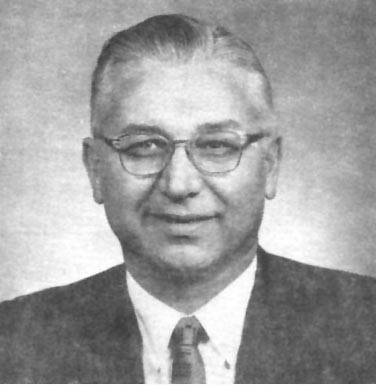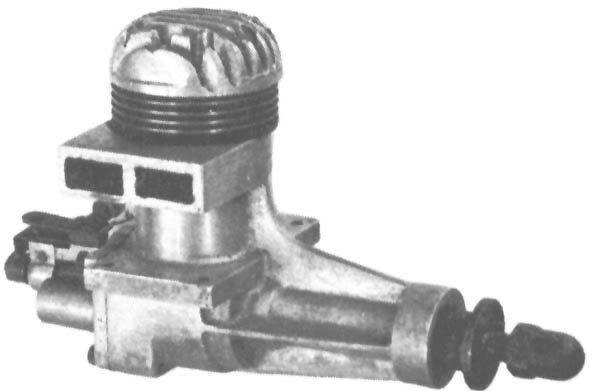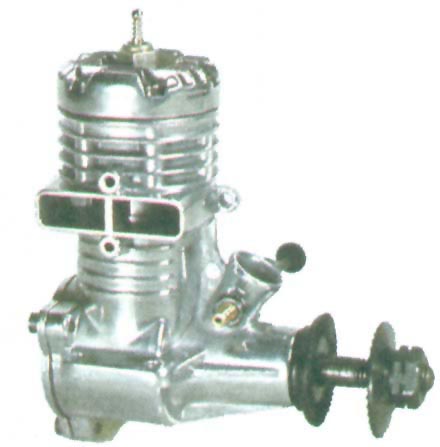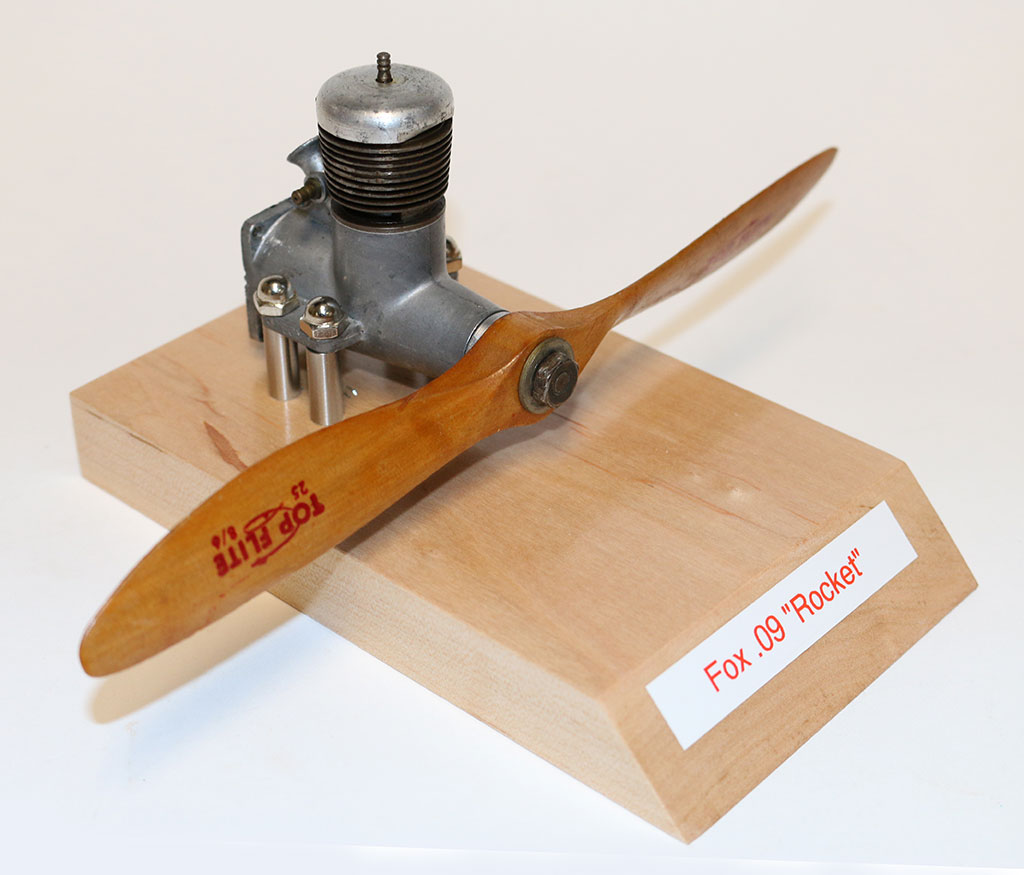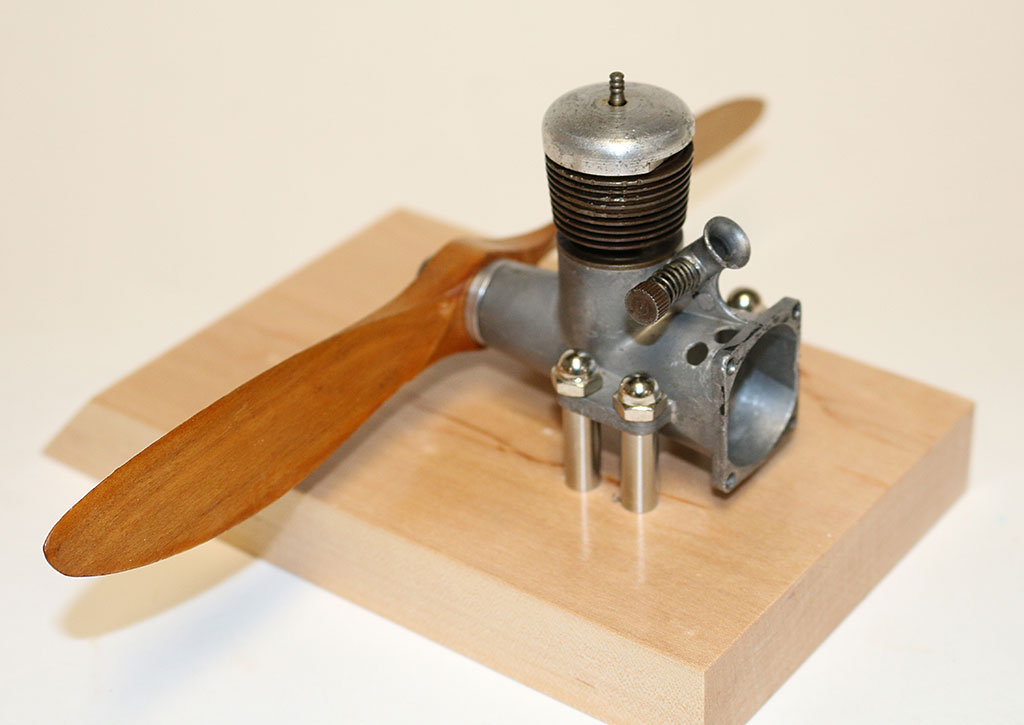1920—1991
A Pioneering Figure in the Model Airplane Engine World
Introduction
Duke Fox, founder of Fox Manufacturing Company, and a leading model airplane engine designer and manufacturer, passed away on February 15, 1991. Mr. Fox was a leading figure in the model airplane engine world for many decades. The following autobiography and photos were submitted to the media by Betty Fox.
An Autobiography of the Designer and Manufacturer of Fox Engines
By Duke Fox
I suppose I should be saying that my earliest memories were flying model airplanes, but truthfully, this is not so. My earliest memory is from moving from a house with an indoor toilet to one that had an outhouse, and may mother being afraid that I was going to fall into the “you know what.” I never did, however, and in a few months we moved into town in the “brown house.” I suppose I was about three and one half at the time.
My father then made his living selling Model T Fords, and the town was Ripon, California (at that time with a population of 800-900 people). Within a few weeks of moving into the brown house, my father had acquired a goat and a dozen chickens. He also built a chicken pen, a chicken shed, and a roost. I noticed that the chickens would fly across the pen, and I was fascinated at how they were able to fly. In fact, just about everything fascinated me. I was told that the bars on the roost were what the chickens slept on, and I couldn’t understand why they didn’t fall off. So, I found out.
I went out one evening and sat on the roost, and watched the chickens come in one by one climbing onto the perch. Soon, there were a dozen chickens on this roost, and one small boy. Sleep is catching, because I went to sleep. The next thing I remember is my father picking me up off the roost, and carrying me into the house.
In those days, the biggest problem in selling an automobile was to convince the prospects that they could learn to drive it. Somehow, my father never did seem to have any problem this way. In fact, he even taught me to drive, so it was a great lark for me. He would cone home during the day with a different car nearly every time, and tell me, “Go and drive that one around the block, and see how you like it.” You can imagine a four or five year old boy driving a car around the block. It’s a good thing that the cars in those days had low hoods, otherwise, I would never have been able to see anything except the dashboards.
It was years later before I ever figured out that I was helping my father convince the prospects that he or she could learn to drive easily. About this same time, my father would take me to the shop (which was only two blocks away) whenever they had an automobile that was pulled down for a ring job, valve grind, or whatever. By the time I was four and one half years old, I understood clearly what a valve, crankshaft, piston, coil, timer, and transmission did, and how they functioned.
My interest in flying chickens shifted to all birds. Whenever I would see a strange bird, I would run and ask my mother or father what that was. One day, a big bird flew over and it was making a loud noise, and I did the usual thing. I ran in and asked my father, who happened to be there, to come see and tell me what kind of bird it was. He explained, “Son, that is not a bird, that is a machine, and there is a man in it.” What a mind-boggling concept! A machine that a man could ride in! I was hooked for life.
One of the toys that appeared for me to play with about this time was a model windmill, with blades that actually turned in the wind. That toy lasted for quite a few weeks, and I experimented with the wind blowing forward, backward, up, down edgewise; and how the vane would turn the fan into the wind, and vice versa. I would spin it and see if it would make a little wind. From playing with that toy, I think I developed a fair understanding of how a propeller worked.
Then, wonder of wonders, when I was about five years old, a barnstormer came to town. My proud father came home, swooped me up, and said, “We’ve got to go see this.” In a farmer’s field, about a mile away, was this beautiful biplane. I can see it today. It had a radial motor up front. I know I was no older than five, because shortly after I was five we moved to another house.
My father proudly pushed me up and told the pilot of the airplane what a smart kid he’s got. The pilot pointed to a cylinder and asked me what that was. I can remember saying, “Well, that has to be a cylinder, and there would be a piston in it that would go up and down, but I have never seen a motor with the cylinders arranged in a circle like that. They have always been in a straight line.” The pilot pointed to a push rod, and I said, “I don’t know what you call it, but it would make a valve go.”
Shortly after, we moved out in the country a bit, where we lived for six or eight months. My father came home with a kite one time. Oh, wonder of wonders! We went out and flew it together, and sent messages up the string until my father wound it up and said that it was time to go in. I flew that kite quite a number of times out in the small pasture nearby, until one day it got away from me, and the kite sailed away. I went after it for all I was worth.
The kite went down some distance away in an orchard. I don’t know what kind of fruit trees those were, but they had thorns. I rescued my kite, and when I was climbing down the tree, my folks and the neighbors both appeared and took me home. Boy I was a bloody mess! I had scratches all over me, but not to worry, my precious kite was safe.
I also learned about this time that I was not really big enough to handle a shotgun. My father thought that I should, but man, when that thing went off, down I went. My shoulder was sore for a week after that.
When I was about six years old, my folks thought that I should go to school. To make things work out right, they moved to a nearby town, Manteca, where I lived until I finished junior college.
When I was about eight years old, my father brought home a kit of a Baby ROG. Actually, it wasn’t an ROG, as it didn’t have any legs. It had about a 12″ wingspan with a 1/8″ square motor stock, and it was tissue covered. My father helped me build the model, and for the first time I smelled model airplane cement and banana oil.
It took about a day to get it finished, and we flew it indoors. It was great. If I launched it in the kitchen doorway, it would fly through the dining room and into the living room, which was straight on, and it would hit the front wall at about the ceiling point. What a thrill!
I flew that model dozens of times, and one day I flew it for one of my neighbor boys my age, and we were talking about the marvel of it. He was tossing his cap up in the air and catching it. Then disaster struck. The cap landed on the model and crushed it. There was no fixing it because we had no more wood for a motor stick.
These memories are still in my mind today. There was nothing to do but try to build another one. Out to the woodpile I went, sharpened my pocketknife as sharp as I could, and selected nice pieces of wood to use. I was able to sliver down some redwood to pretty thin pieces to make the wing frame, and I was able to make wing clips out of paper clips. Also, a paper clip made a good rear hook.
The thrust washer was a little more of a problem. I finally solved it by hammering on a nail until it was properly flattened; and then, with a series of additional nails, would keep pounding onto the place until I was able to get a hole in it. Then I bent it and clipped it off, and presto, a thrust washer.
I probably built half a dozen kindling wood models using LePages glue, which has to be the worst excuse for glue man ever invented, and covered them with wax paper. You know, it really is hard to get wax paper to stick to wood using LePages glue. Somehow, I was able to get it done. Some of my models actually flew eight or ten feet, especially if I threw them kind of hard.
Model Airplane News appeared on the newsstand in about August, 1929, I am told. A whole new world opened up. I could send away money and get balsa wood, banana oil, good tissue, wire, cement, rubber and all sorts of good things back by mail. Also, I started sending for catalogs, which I devoured. In very short order, I had the house filled with Baby ROG type models: some a little bigger, some a little smaller, some with landing gears, some without. I made pushers, and experimented with CG and whatnot on those. I made a tailless plane. I built an ornithopter or two. Anything connected with flying that could be built with a model, I wanted to build.
I remember when I was in the fourth grade, one day the teacher told us to open our book to a certain page and to start reading. I liked reading, and was good at it. I went through about three stories and half of the fourth, when she said to quit. Then, she asked us to start counting backward to see how many words we had read.
I remember the number to this day. I had read 430 words in a minute’s time. I don’t think the teacher believed me at first, because she started asking me questions about different characters. I can remember saying, “Well which story are you talking about? In the first story they did this, and in the second story they did that, and in the third story there was nobody by that name.” I never had to sit through reading classes after that.
One day, the school principal asked me to show him my models. He asked me to bring the models over, and we flew them in the school auditorium. He was quite impressed, and told me that I could fly my models there any time. All I had to do was just ask the janitor to let me in. However, that didn’t work so great because the janitor always seemed to want to hide when I came around, as he was always in a hurry to do something else.
We were in the deepest part of the depression by then, and nobody was buying automobiles. In order to feed the family, my father started farming the vacant lots around the area. What little money was made off the produce bought groceries so that we wouldn’t be too hungry. As I look back, there was a two or three year period that I never did have enough to eat.
Meanwhile, I was growing like a beanpole. My feet had grown so big that I couldn’t wear anybody’s cast offs. It took real money to get me shoes. Hand-me-down shirts and overalls I could wear. I can remember the year I graduated from grade school. I graduated in a borrowed suit, a neck tie my school teacher had given me, and a haircut that a friendly neighborhood barber had given me.
The house we had lived in was repossessed. Fortunately, my father had owned a vacant lot, and was able to buy a milk shed for $15.00. We moved the milk shed onto the vacant lot. Shortly after this, the economy started easing up a little bit. No matter how tight things were, though, I was able to come up with 75¢ or $1.00 a month to send away for model building supplies, and I kept building models after school all of this period.
In those days, a thirteen year old boy could get a job. I was able to get a job during the summer in the cannery ,paying first 15¢ an hour, and then 25¢ an hour. This financed my school clothes through high school, and my model building—and in my junior year, an automobile. I had wheels and could go to model contests.
The Junior Birdmen, sponsored by the San Francisco Examiner, had hired a man who was promoting the Junior Birdmen. They held a series of contests throughout central California, one contest nearly every Sunday. Boy, did I go for those! Their system was that if you won first place in one of their events, you got a silver wristlet, and that made you an ace.
Over a couple of years, I accumulated several dozen of those silver wristlets. I began to get the feeling that some of the contest regulars weren’t too happy to see me when I pulled up to a contest. All of these contests related to either gliders or rubber models, because Mr. Hurst felt that the gasoline powered model was dangerous, and he resisted it.
(Read the rest of Duke Fox’s autobiography.)

